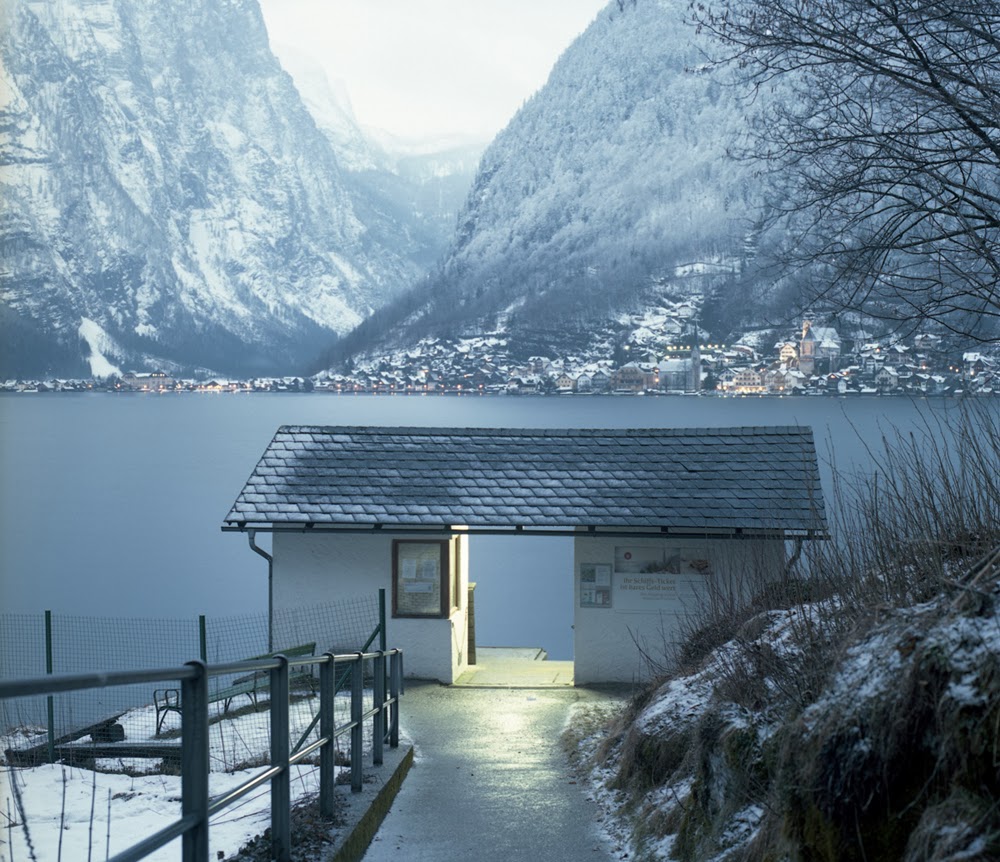no title, oil on canvas over panel, 13 3/8 x 21 1/2 inches, 2014
no title, oil on panel, 9 x 16 inches, 2010
Station, gesso on canvas over panel, 11 x 26 inches, 2009
no title, oil on panel, 9 x 16 inches, 2008
no title, oil on panel, 9 x 16 inches, 2007
Like a visual Bukowski (sans the sex and anger), Olsen's images have a desolation, a bleakness, that resonates with the darker side of life. And his paintings are both painted at night and use night as a subject to emphasize the solitary, lonely energy of 3am on the streets. They are utterly compelling and seductive, using a relentless vision that simultaneously pits contemporary angst and anxiety against a comforting, almost peaceful, view of a familiar urban landscape.
Two obits from Art Forum here and here and one from the LA Times provide additional background about Robert Olsen's artistic practice and tributes to his spirit as an artist.
************
The Conversation, oil on canvas, 50 x 70 inches, 1991
A rather sunnier version of Robert Olsen might be found in the work of artist John Register (1939-1996). Like Olsen, his vacant American landscapes are still and quiet, but filled in living California color with the haunting specter of unfulfilled dreams. Endless empty seats silently waiting and watching, as demure witnesses to our presence and, perhaps, our departure. Diners, laundry mats, lobbies, and literal waiting rooms present themselves with a bloated anticipation, like a breath taken and awaiting its release.
Red Booths, silkscreen, 33 1/2 x 48 inches, 1986
Waiting Room for the Beyond, silkscreen, 41 x 41 inches, 1988
Venetian Light, silkscreen & lithograph, 50 x 42 inches, 1990
You are right if you are reminded of Hopper, but Register himself said, "Hopper paints someone else's isolation. In my pictures you're the isolated one." 1.
It seems not coincidental that both Olsen and Register painted in California....
“California is a place in which a boom mentality and a sense of Chekhovian loss meet in uneasy suspension; in which the mind is troubled by some buried but ineradicable suspicion that things better work here, because here, beneath the immense bleached sky, is where we run out of continent.” ~ Joan Didion
Wasteland Hotel, silkscreen, 42 1/2 x 56 1/2 inches, 1990
************
But if these two artists depict a certain despair, I would posit that Doug Young's empty rooms are similarly haunting, but they are not hollowed out psychological dramas. Young's images navigate our dreams and aspirations for space travel, musical talent, American heroes, or the bright side of luck. His vacant scenes are actually unflinching snapshots of the complexity of hope.

Mission Control, reverse painting on glass, automotive paint, 49 x 49 inches, 2011
Air Force One, reverse painting on glass, automotive paint, 49 x 49 inches, 2014
Price is Right, reverse painting on glass, automotive paint, 49 x 49 inches, 2013
Music Room, reverse painting on glass, automotive paint, 49 x 49 inches, 2012
“I'm not telling you to make the world better, because I don't think that progress is necessarily part of the package. I'm just telling you to live in it. Not just to endure it, not just to suffer it, not just to pass through it, but to live in it. To look at it. To try to get the picture. To live recklessly. To take chances. To make your own work and take pride in it. To seize the moment. And if you ask me why you should bother to do that, I could tell you that the grave's a fine and private place, but none I think do there embrace. Nor do they sing there, or write, or argue, or see the tidal bore on the Amazon, or touch their children. And that's what there is to do and get it while you can and good luck at it.”
~ Joan Didion
1. http://www.oocities.org/soho/cafe/5618/atartists1.html






























